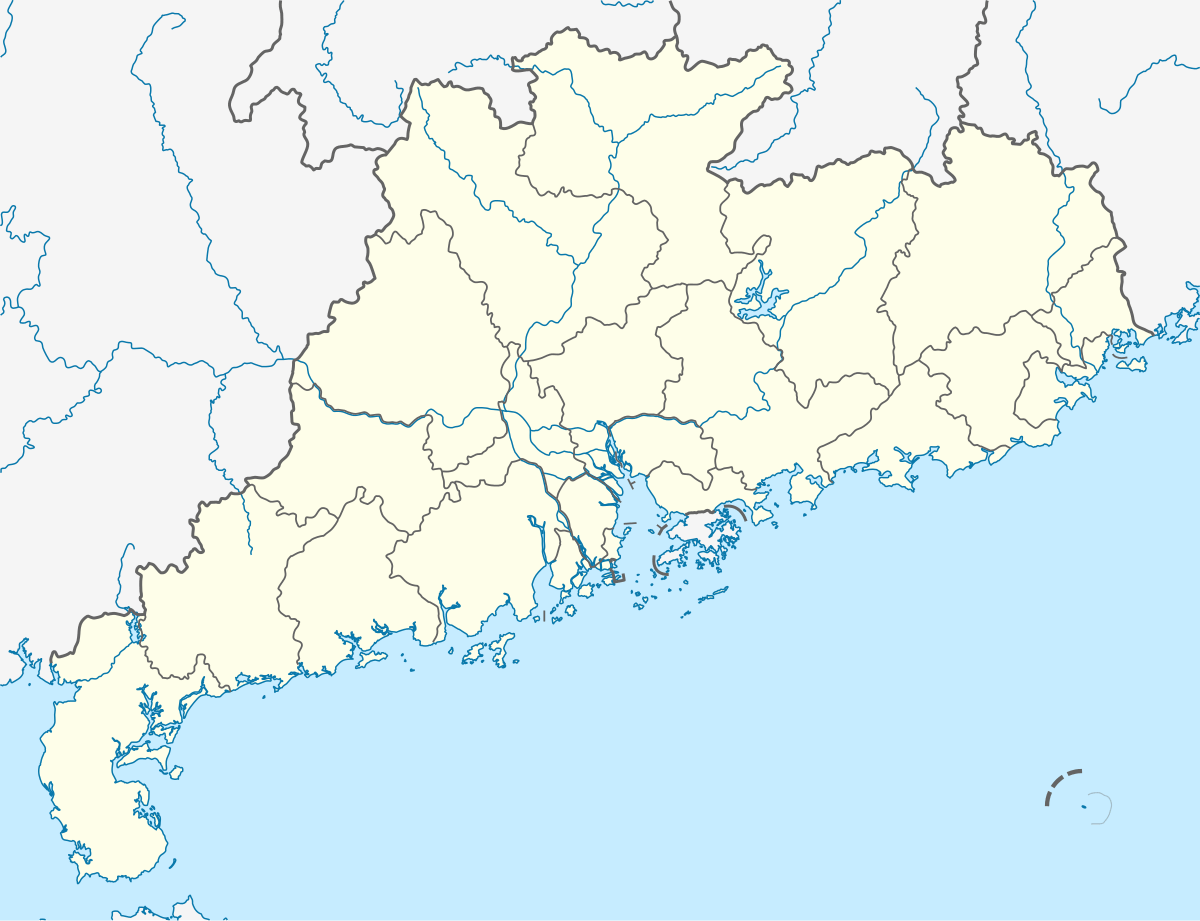Baisha, Taishan
| Baisha 白沙镇 | |
|---|---|
| Town | |
 Baisha Location in Guangdong | |
| Coordinates: 22°14′45″N 112°35′41″E / 22.24583°N 112.59472°ECoordinates: 22°14′45″N 112°35′41″E / 22.24583°N 112.59472°E | |
| Country | People's Republic of China |
| Province | Guangdong |
| Prefecture-level city | Jiangmen |
| County-level city | Taishan |
| Area | |
| • Total | 238 km2 (92 sq mi) |
| Population | |
| • Total | 140,000 |
| • Density | 590/km2 (1,500/sq mi) |
| Time zone | China Standard (UTC+8) |
Baisha (Chinese: 白沙; pinyin: Báishā; Jyutping: baak6saa1; literally: "white sand"; Taishanese: Bak-sa) is a town of Taishan, Guangdong province. It has a population of 140,000 residing in an area of 238 km2 (92 sq mi).
History
Baisha town was the ancestral home of many of the first Chinese Canadians. Their descendants live all over Canada, and used to predominate before the 1980s in the Chinatowns of Victoria, Vancouver, Calgary, Banff and Edmonton, and US West Coast cities such as San Francisco and Seattle.
Economy
Baisha Town is one of the few regions in northern Guangdong province where illegal rare earth mines were operating.[1] Baisha Town is rich in rare earth minerals such as dysprosium.[1]
Dialect
The Baisha variant of Taishanese is fading amongst the descendants of Canadian-Chinese, as Cantonese and Mandarin become more dominant. Based on observations of Chinese-Canadian elders living in Edmonton between 1980 and 2005, it would seem that the Taishan language spoken in Baisha in the mid-20th century differed somewhat from that spoken in Taicheng (Hoiseng in the Hoisan language, 台城), the county seat of Taishan (Hoisan, 台山县). Indeed, the pronunciation was more or less the same as that of people living across the river in the next county, Kaiping (Hoiping in the Toisanese language, 开平). One notable difference can be seen in the shift of certain vowel sounds, as follows:
| English | Taishanese | Cantonese | Mandarin | |||||
|---|---|---|---|---|---|---|---|---|
| Baisha | Taishan | Cantonese IPA | Jyutping | Traditional Chinese characters |
Mandarin IPA | Pinyin | Simplified Chinese characters | |
| blood | het | hut | ɕjɛ˨˩˦ | xuě | 血 | |||
| moon | nget | ngut | ɥɛ˥˩ | yùe | 月 | |||
| snow | hlet | hlut | ɕɥɛ˨˩˦ | xǔe | 雪 | |||
Besides the differences in some vowel sounds, the consonant [b] of Mandarin is usually realized as [v], and [p] as [h].
| English | Taishanese | Cantonese | Mandarin | |||||
|---|---|---|---|---|---|---|---|---|
| Baisha | Taishan | Cantonese IPA | Jyutping | Traditional Chinese characters |
Mandarin IPA | Pinyin | Simplified Chinese characters | |
| (stomach) full | vow | bow | pɑʊ˨˩˦ | bǎo | 饱 | |||
| eight | vatt | batt | pa˥ | bā | 八 | |||
| quilt | hi | pi | peɪ˥˩tsɨ | bèizi | 被子 | |||
| wife | law hu | law pu | lɑʊ˨˩pʰo˧˥ | lǎopó | 老婆 | |||
References
- 1 2 Bradsher, Keith; Hilda Wang (29 December 2010). "In China, Illegal Rare Earth Mines Face Crackdown". New York Times. Retrieved 2010-12-30.